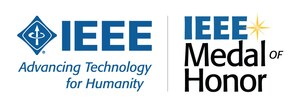Broader 4G Wireless Access Will Accelerate Economic Development and Improve Quality of Life in Rural and Developing Regions of the World, Say IEEE Wireless Experts
Advancements in education, agriculture, and healthcare are some of the potential benefits highlighted during World Telecommunication Day
PISCATAWAY, N.J., May 16, 2011 /PRNewswire/ -- Broader access to fast 4G wireless technologies promises to give a boost to rural and developing parts of the world where landline Internet is less developed, say experts from IEEE, the world's largest technical professional association. In March, the IEEE-SA Standards Board approved IEEE 802.16m, an advanced 4G wireless standard. High-speed wireless would improve education through more sophisticated distance learning, give farmers better access to agronomic and market information, and extend the reach of high-quality healthcare through telemedicine.
"Better life in rural communities with information and communication technologies" is this year's theme for World Telecommunication Day, a recognition created by the U.N. International Telecommunication Union and celebrated annually on May 17 since 1969. While current wireless services marketed as "4G," such as first-release LTE and Mobile WiMAX, represent an incremental advance over existing networks, advanced 4G wireless as defined by the IEEE Standards Association would bring important additional speed and ease-of-implementation to less developed parts of the world.
"Increased bandwidth through 4G will open many doors for rural areas of the world that do not currently have easy access to advanced data networks," said Dr. Shuzo Kato, IEEE Fellow and inventor of the TDMA chipset in 1986. "For example, medical doctors could instantly and remotely connect via video to rural areas to guide emergency workers in treating the sick or injured. And greater access to educational materials could not only enrich the learning experience in the classroom, but it could also help farmers improve agricultural practices and increase productivity."
Dr. Kato, who is also a professor at the Research Institute of Electrical Communications, Tohoku University in Japan, notes that with peak data transfer speeds between 100 Mbps and 1 Gbps – faster than most consumers' landline Internet access today – 4G wireless will reduce the digital divide between major urban centers and rural and developing parts of the world. In addition, because 4G operates on a greater number of frequency bands than previous wireless generations, operators can employ lower-frequency signals that travel much further from transmitter stations using the same amount of power. This broadens geographic coverage at lower cost than existing generations of wireless technology.
According to the United Nations Population Fund, nearly half of the world – more than 3 billion people – resides in rural regions. With relatively low population densities, the cost-effectiveness of laying fiber optic cable to deliver telecommunications services in these areas has traditionally been prohibitive. Similarly, the bandwidth and coverage constraints of previous wireless generations made it challenging for operators in some countries, such as Brazil and India, to offer the types of services required to make the investment worthwhile.
However, in recent years, the rate of adoption of wireless in rural and developing regions has increased. In fact, according to recent data from industry research firm Wireless Intelligence, developing markets accounted for nearly 80 percent of the world's total mobile connections. China and India, categorized as developing economies by the World Bank, together account for almost 30 percent (1.5 billion) of the world's total mobile connections.
"As subscriber volume for wireless services grows in rural and developing areas, it is expected that reduced infrastructure costs will translate into more robust services and the ability for everyone, regardless of location, to more effectively participate in growing industries and economies," said Dr. Carlos Cordeiro, IEEE Senior Member and chief standards architect for Intel's Mobile Wireless Group.
Since 2001, the IEEE 802.16 Working Group on Broadband Wireless Access Standards has developed and approved a number of advanced wireless network standards including Mobile WirelessMAN®, commercially known as WiMAX. These technologies are already being deployed in more than 140 countries worldwide. Additional IEEE resources and multimedia content on 4G wireless include:
- Video discussion of WirelessMAN: Inside the IEEE 802.16 Standard for Wireless Metropolitan Area Networks: http://www.ieee.org/portal/ieeetv/viewer.html?progId=89090
- IEEE 802.16 Working Group on Broadband Wireless Access Standards Committee Website: http://www.ieee802.org/16/
For more information on IEEE, or to speak with a member about the benefits of 4G wireless in rural and developing regions of the world, please contact: [email protected].
About IEEE
IEEE, the world's largest technical professional association, is dedicated to advancing technology for the benefit of humanity. Through its highly cited publications, conferences, technology standards, and professional and educational activities, IEEE is the trusted voice on a wide variety of areas ranging from aerospace systems, computers and telecommunications to biomedical engineering, electric power and consumer electronics. Learn more: http://www.ieee.org.
SOURCE IEEE
WANT YOUR COMPANY'S NEWS FEATURED ON PRNEWSWIRE.COM?
Newsrooms &
Influencers
Digital Media
Outlets
Journalists
Opted In





Share this article